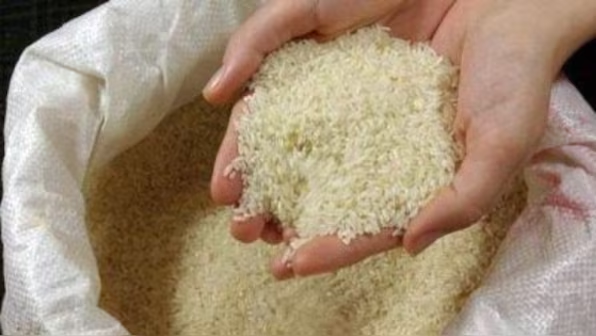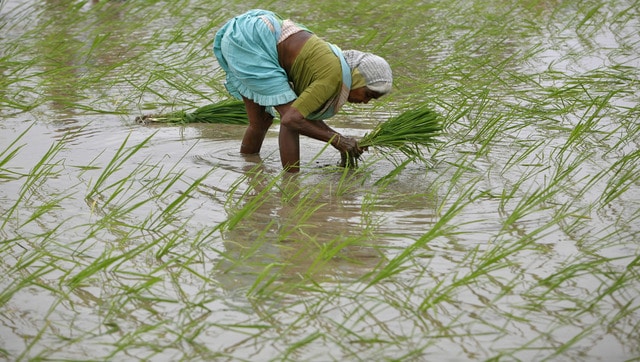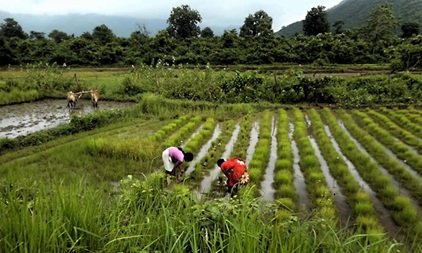Tags
How India, Pakistan’s moves on rice exports led to drop in global prices
FP Explainers
The price of rice has dropped globally after India lifted its 2023 curbs on the export of non-basmati white rice and cut the export tax on white rice to zero and Pakistan removed its Minimum Export Price for all varieties. Let’s take a closer look

The price of rice is going down, down, down.
The development comes just days after India lifted its ban on the export of non-basmati white rice.
It came a day after Pakistan removed its Minimum Export Price for all varieties.
But how have India and Pakistan’s moved on rice exports have led to a global drop in prices?
Let’s take a closer look:
What did India do?
New Delhi on Saturday set a floor price for non-basmati white rice exports of $490 per metric ton.
That came a day after the government cut the export tax on white rice to zero.
India also reduced the export duty on parboiled rice to 10 per cent from 20 per cent previously.
New Delhi’s decision to allow traders to sell non-basmati white rice on the world market follows a series of moves to ease export restrictions on premium, aromatic basmati and parboiled varieties.
It made the move buoyed by a new crop in the offing and higher inventories in state warehouses.
Since the 2023 ban on exports, local supplies have picked up, bumping up stocks at government warehouses.
Rice stocks at the state-run Food Corporation of India on Sept. 1 stood at 32.3 million metric tons, 38.6 per cent higher than last year, giving the government ample room to ease rice export curbs.

Buoyed by copious monsoon rains, farmers have planted rice on 41.35 million hectares (102.18 million acres), up from 40.45 million hectares (99.95 million acres) last year and an average of 40.1 million hectares (99.09 million acres) over the last five years.
As per Al Jazeera, India and Pakistan are the only nations producing basmati rice.
India also set an MEP of $950 per metric ton for Basmati rice.
Exporters said India’s move to resume exports had boosted global supply and helping poor Asian and African buyers secure more affordable supplies.
“Suppliers from Thailand, Vietnam, and Pakistan are responding to India’s move by lowering their export prices,” said Himanshu Agarwal, executive director at Satyam Balajee, a leading rice exporter. “Everyone’s trying to stay competitive to hold their spot in the market.”
On Monday, India’s five per cent broken parboiled variety was quoted at $500-$510 per metric ton, down from the last week’s $530-$536. Indian five per cent broken white rice was offered around $490.
Exporters in Vietnam, Pakistan, Thailand and Myanmar also lowered prices by at least $10 per ton on Monday, dealers said.
The Philippines, Nigeria, Iraq, Senegal, Indonesia, and Malaysia are among the key importers of Asian rice.
Buyers and sellers are evaluating the potential impact of increased Indian rice supplies and accordingly prices would settle this week, said Nitin Gupta, senior vice president of Olam Agri India.
Thai rice prices were quoted at $540-$550 on Monday, down from last week’s $550 to $560 per ton.
Thailand’s rice export prices could decrease due to increased supplies in the market, but the extent of the decline would depend on several factors, including the appreciating Thai currency, said Chukiat Opaswong, honorary president of the Thai Rice Exporters Association.
Rice prices have started to correct, even in Vietnam, but traders caution that the full impact of Indian supplies has yet to be seen.
“(Vietnamese) exporters should stay calm and avoid reducing prices to secure contracts,” said Truong Tan Tai, chief executive of Vinarice Co., a rice exporter.
The decision to allow non-basmati rice exports will raise farm incomes in the countryside and help India regain its position in the global market, said Rajesh Paharia Jain, a New Delhi-based trader.
Despite the 10 per cent export tax on parboiled rice and the floor price of $490 a metric ton, Indian white rice will be competitive q in the international market, said BV Krishna Rao, president of the Rice Exporters’ Association.
What about Pakistan?
Al Jazeera quoted Pakistan’s commerce minister Jam Kamal Khan as saying the government acted after the Rice Exporters Association of Pakistan (REAP) urged it to do away with the MEP.
Khan said the MEP was introduced in the aftermath of the spike in global rice prices.
“However, with the recent decline in international rice prices and India lifting its export ban, the MEP has become an obstacle for Pakistani rice exporters to remain competitive in global markets,” the minister said.
Pakistan had benefitted massively from India’s ban on the export of basmati rice.
It saw a 60 per cent growth in rice exports and a 78 per cent hike in value from July 2023 to June 2024.
It exported around six million metric tons of rice, including 750,000 tonnes of basmati rice and generated $3.9 billion of revenue.
But things won’t be so easy for Pakistan with India coming back to the market.
Chela Ram Kewlani, a former chairman of REAP, told Al Jazeera, “International market demand and supply is what regulates the rice price and now with India back in the business, our exports could have been impacted if we still had a MEP in place.”
India’s curbs
India in 2023 had imposed curbs on the export of white rice. New Delhi also levied a 20 per cent duty on parboiled rice exports.
India had imposed the curbs as the El Nino weather pattern raised the specter of poor monsoon rains.
India was also looking to keep local prices in check ahead of the April-June national election.
The move by India, the top exporter of the grain across the world, resulted in global rice prices soaring to their highest level in over 15 years.
India in 2022 had accounted for a record 22.2 million metric tons out of a total of 55.4 million –over 40 per cent of the world’s rice exports.
India’s exports were bigger than the shipments of the world’s next four biggest exporters combined – Thailand, Vietnam, Pakistan and the United States.
India exports rice to more than 140 countries.
Top buyers of Indian non-basmati rice include Benin, Bangladesh, Angola, Cameroon, Djibouti, Guinea, Ivory Coast, Kenya and Nepal.
Iran, Iraq and Saudi Arabia mainly buy premium basmati rice from India.
Restrictions in 2023 cut India’s rice exports by 20 per cent to 17.8 million tons and exports in the first seven months of 2024 were down by a quarter from a year earlier.
India’s lowered exports forced Asian and African buyers to switch to Thailand, Vietnam, Pakistan, and Myanmar.
The sudden surge in demand amid limited surpluses sent export prices in these countries to their highest levels in more than 15 years.
Last year’s export curbs imposed by India allowed competing suppliers like Vietnam, Thailand, Pakistan, and Myanmar to increase their market share and command higher prices in the global market.
With inputs from agencies
https://www.firstpost.com/explainers/how-india-pakistans-moves-on-rice-exports-led-to-drop-in-global-prices-13821763.htmlPublished Date: October 4, 2024






